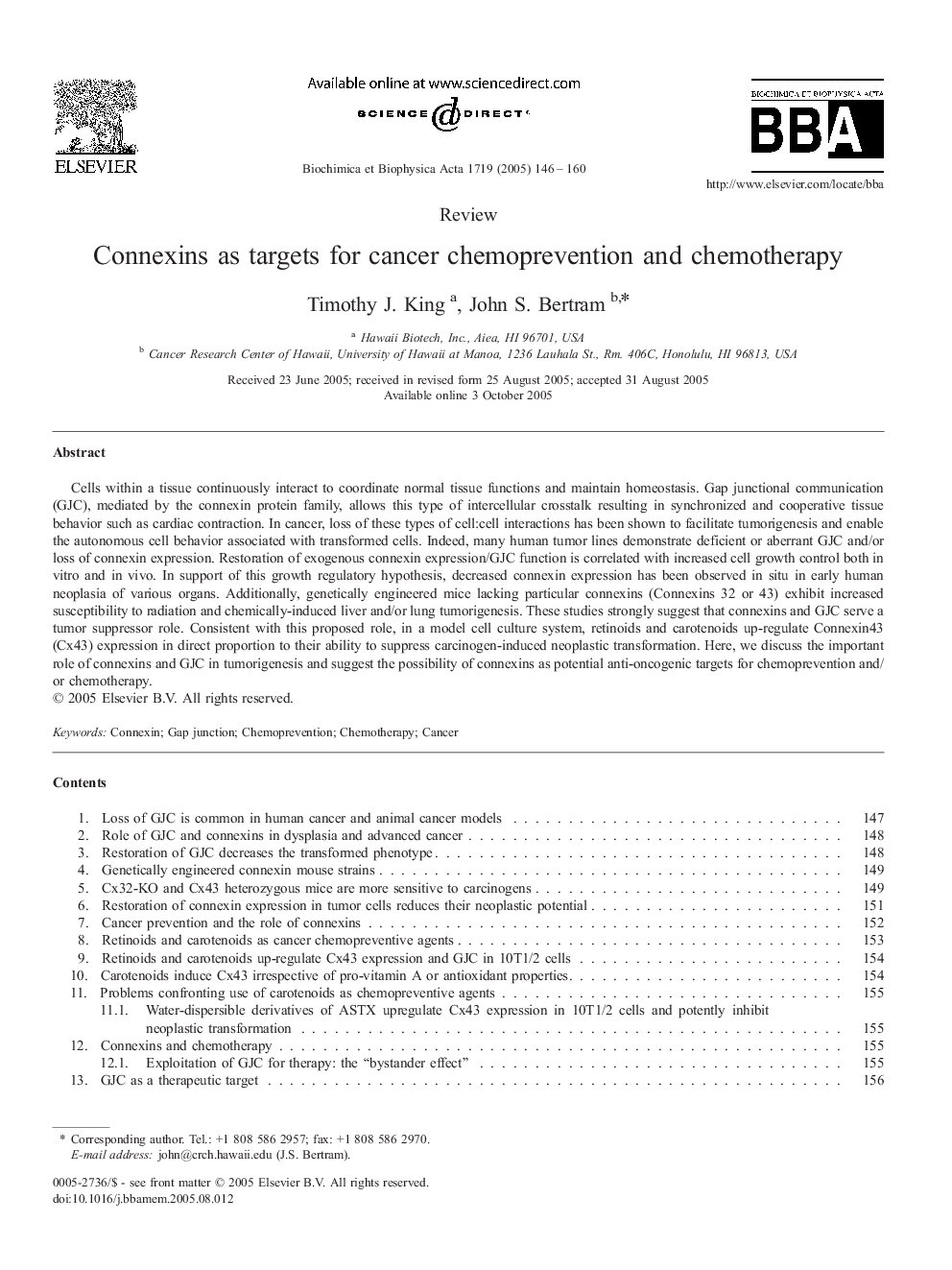| Article ID | Journal | Published Year | Pages | File Type |
|---|---|---|---|---|
| 9885124 | Biochimica et Biophysica Acta (BBA) - Biomembranes | 2005 | 15 Pages |
Abstract
Cells within a tissue continuously interact to coordinate normal tissue functions and maintain homeostasis. Gap junctional communication (GJC), mediated by the connexin protein family, allows this type of intercellular crosstalk resulting in synchronized and cooperative tissue behavior such as cardiac contraction. In cancer, loss of these types of cell:cell interactions has been shown to facilitate tumorigenesis and enable the autonomous cell behavior associated with transformed cells. Indeed, many human tumor lines demonstrate deficient or aberrant GJC and/or loss of connexin expression. Restoration of exogenous connexin expression/GJC function is correlated with increased cell growth control both in vitro and in vivo. In support of this growth regulatory hypothesis, decreased connexin expression has been observed in situ in early human neoplasia of various organs. Additionally, genetically engineered mice lacking particular connexins (Connexins 32 or 43) exhibit increased susceptibility to radiation and chemically-induced liver and/or lung tumorigenesis. These studies strongly suggest that connexins and GJC serve a tumor suppressor role. Consistent with this proposed role, in a model cell culture system, retinoids and carotenoids up-regulate Connexin43 (Cx43) expression in direct proportion to their ability to suppress carcinogen-induced neoplastic transformation. Here, we discuss the important role of connexins and GJC in tumorigenesis and suggest the possibility of connexins as potential anti-oncogenic targets for chemoprevention and/or chemotherapy.
Related Topics
Life Sciences
Biochemistry, Genetics and Molecular Biology
Biochemistry
Authors
Timothy J. King, John S. Bertram,
